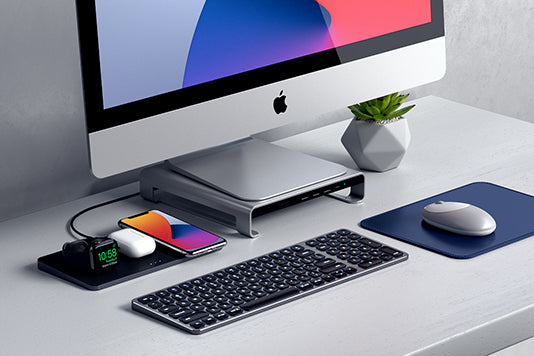The Future of Connectivity: USB4
The shape of the future? Looks pretty familiar, right! The new standard connection coming out in the form of USB4 looks exactly like USB-C, but performs with the power of Thunderbolt 3; which Apple MacBooks and newer PCs have all been switching to. On your computer now, if you have Thunderbolt, you will see a little lightning bolt next to your port.

So how will this change in USB affect you... let’s dive in!
Right now using the standard USB 3.0/3.1 ports can only be inserted one way and max out at about 10 Gbps. They do not transfer over video, as well as some charging and data transfer capabilities are limited with larger power-consuming devices; such as newer tablets, phones, and external hard drives.

With USB4, this connection will be reversible (like the lightning connection on iPhones) and it’s a much smaller design with more options. It will also open up the ability for more data splitting and hubs that allow for higher wattage devices for sending video and data over the same connection… like a lot of the ones we currently offer here at Satechi with our passthrough and multimedia hubs. Through these “adapters” you can split that one port into multiple USB-A, dual HDMI, Mini Display Port, Ethernet, audio, and passthrough charging ability up to 100w (which means you can use other compatible adapters, not just the one that came with your computer!). That means you will be able to send a 4K HDR signal over a USB cable and use the same cable for something like transferring a file or as a connection to a Wi-Fi interface. Imagine having a Swiss Army Knife, but that allows you to plug all your devices into one hub, even backwards compatible devices (which means all those expensive devices and cables you might already own will work just fine), instead of having a bulky computer with a whole bunch of ports that you barely ever use.
For example, let’s say, you are dealing with two things like transferring data from a hard drive and editing a video simultaneously on your USB4 enabled device, equipped with the two-lane operation using existing USB Type-C cables and up to 40 Gbps operation over 40 Gbps certified cables. If the process needs 15 Gbps to transfer data fast and smoothly, USB4 will dynamically adjust to provide the remaining 25 Gbps to the latter, ensuring there is no lag. There was no such feature in the older USB standards; so this change is a huge upgrade.

If you want speed and the ability to share bandwidth between video and data, USB4 has you covered, and it’s going to be a great asset for not only creators and designers, but also us everyday users. Expect a lot of talk in 2020, when USB4 releases, on where the future can take us and just how portable we can be with all of our electronics and gizmos. Satechi will be here on the front lines pioneering new devices to make your work and play a little easier.


Leave a Comment